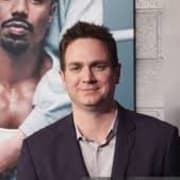140 Days Later: Re-Previewing the (Rest of the) NBA Season
LAKE BUENA VISTA, Fla. – LeBron James, the Lakers' resident graybeard is now, officially, a graybeard, a thick, a silver splashed mane growing from James’s face, a rare sign of aging for L.A.’s 35-year-old star. The COVID-19 pandemic, which shut down the NBA season on March 11, stalled the Lakers, winners of 11 of their last 13, and James, the four-time MVP who was surging toward his fifth. On Tuesday morning, two days before the start of the most unpredictable finish in NBA history, James settled into a high-backed beige chair, his legs ankle deep in an ice bucket, a microphone extending out from a stand in front of him so the dozens of reporters dialed into a Zoom interview could hear him.
Down the hall, across a patterned, burnt-orange carpet, underneath a row of circular chandeliers and past enough Purell bottles to sanitize a Manhattan subway, Damian Lillard is firing up shots. Pre-pandemic, Lillard had little reason to believe the Trail Blazers were anything but lottery bound. Four months later, Lillard still has his backcourt mate, C.J. McCollum. But he also has Zach Collins, the floor stretching big man who has missed all but three games with a shoulder injury. He has Jusuf Nurkic, who has not played at all this season while recovering from a gruesome leg injury 16 months earlier. Portland, 3 ½ games back of Memphis for the final playoff spot in the Western Conference, suddenly, improbably, has hope.
At an impromptu 30th birthday celebration on the NBA campus earlier this month, Lillard had one request.
“My only ask,” Lillard said, “is let’s not waste our f------ time.”
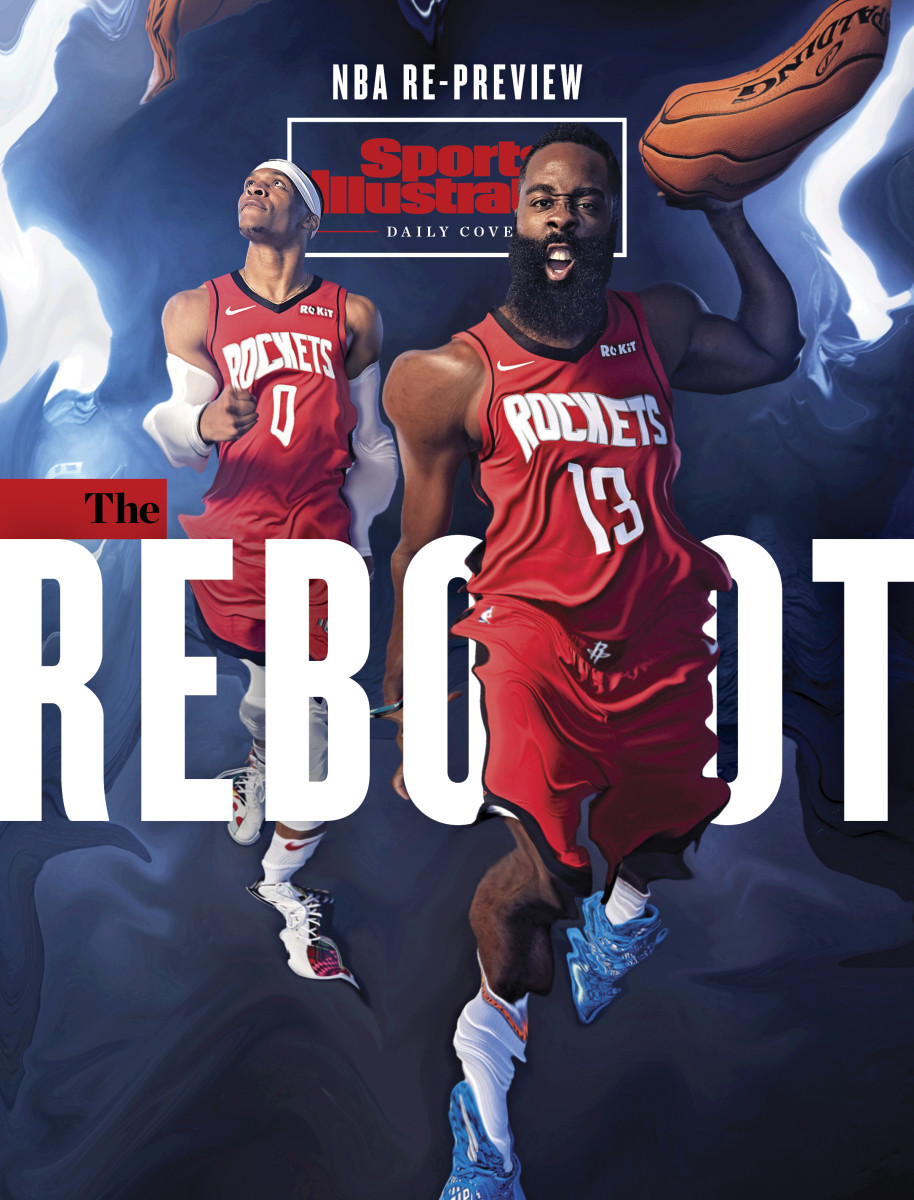
Some four miles down the road, off World Drive, a trip green credentialed media members and staffers can make only in booked vans, James Harden and Russell Westbrook mill around on a practice floor. On July 13, Westbrook announced he tested positive for COVID-19. He arrived in Orlando a week later, rejoining the Rockets and resuming one of the NBA’s wildest experiments. Houston will enter postseason play with one player—36-year old Tyson Chandler—taller than 6' 9". Against the Nikola Jokic–led Nuggets, the Rudy Gobert–led Jazz and the Steven Adams–led Thunder, the Rockets will line up 6' 5" P.J. Tucker at starting center.
In the middle of it all is Westbrook. Westbrook is as talented as he is polarizing, owner of the most unbreakable mark in NBA history—nobody will ever surpass Westbrook’s three seasons averaging a triple double—but panned by critics as a selfish player. If the Rockets succeed, Westbrook will be vindicated. If they fail, he will undoubtedly shoulder a share of the blame.
Inside the most unusual experiment in sports history, the vibe is decidedly … normal. The bubble is holding. The 113 pages of protocols are being followed. The NBA reported zero positive COVID-19 tests among the 344 players tested this week, the second straight week the league has come back clean. Some 1,500 people, spread through four hotels, mix daily in the soupy central Florida air, darting from building to building amid near hourly rainstorms. Players, initially fearful that a return to play would overshadow the social justice movement that is sweeping through the nation, have pushed the issue to the forefront, routinely cutting off interviews to demand justice for Breonna Taylor, the 26-year old EMT who was shot and killed by Louisville police in March, often name-checking Daniel Cameron, the Kentucky attorney general, who is leading the investigation. Most will wear social justice messages on the backs of their jerseys.
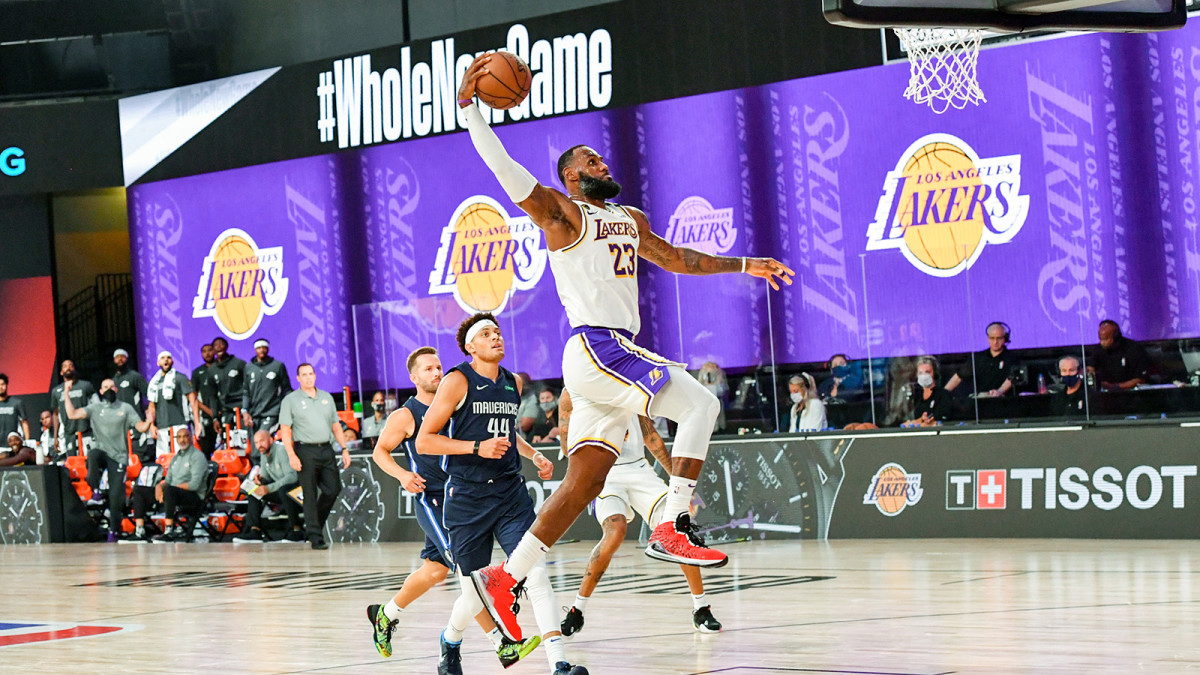
On Thursday, four months after the NBA abruptly shut down, the league will play meaningful games again. But how will it return? The Lakers and Bucks led their respective conferences by healthy margins—are they still the favorites to come out of them? Are there spoilers? Who are they? Exhibition games—sorry, scrimmages—offered little real insight, with many teams pulling its starters after the first half. The NBA playoffs, once fairly predictable, will be anything but.
“People have asked me, ‘How is the bubble?’ ” James says. “It’s 2020. Things are just different.”
***
“Hey coach, how are you today?”
The voice boomed through a speaker, a Nuggets PR man greeting head coach Mike Malone as Malone settled into a seat to conduct a daily Zoom call with reporters. In Orlando, a dozen or so reporters mingle among teams, popping in and out of practices. Most of a team’s interaction with the media, however, is done virtually.
Malone paused, exhaling deeply into his designer team mask.
“F------ great,” Malone says.
Four months ago, Denver was an emerging threat. The Nuggets were 43-22, parked in the third spot in the conference. When the NBA reconvened in Orlando, Denver flew in without half its roster. Last month, Nikola Jokic tested positive for COVID-19, delaying his arrival. Several other players were delayed, presumably for the same reason. P.J. Dozier, a backup guard, arrived on Wednesday, filling out Denver’s roster for the first time.
“I have no idea who is going to be available on Saturday,” Malone says, referring to Denver’s opener. “There’s so much up in the air right now.”
Teams agree: Call it a resumed season if you want. But, really it isn’t. Utah will restart its season without Bojan Bogdanovic, a 20-point per game scorer. Philadelphia will have Ben Simmons, his season-ending back injury no longer season-ending. The Lakers will be without Avery Bradley. Portland is down Trevor Ariza. Oklahoma City welcomed back Andre Roberson.
Says Kawhi Leonard, “It’s basically a new season.”
Missing players are a variable, obviously. But there are other, unseen ones. The Clippers will, on paper, be the same group that won 44-games before the pandemic. Like Denver, L.A. has been ravaged by roster issues. Marcus Morris was a late report to the bubble. Ivica Zubac, who tested positive for COVID-19 in late June, was just cleared to practice this week. Montrezl Harrell and Patrick Beverly left the bubble for personal reasons. Lou Williams did, too, and thanks to an ill-advised trip to an Atlanta strip club, Williams will miss the first two seeding games while serving an NBA-mandated 10-day quarantine. The Clippers have held shorter practices. They have limited adding in any new concepts. Players have admitted that it has been difficult to get into a rhythm.
“Adversity isn’t all bad,” Clippers coach Doc Rivers says. “You’re going to go through hard stuff. If it’s at the beginning, then let’s do it now.”
Conditioning, Rivers says, is a significant issue, a sentiment widely echoed in Orlando. Some players (Mo Bamba, Ben Simmons) bulked up during the hiatus. Others (Carmelo Anthony, James Harden) slimmed down. Few, if any, are in midseason form. Eager to avoid soft-tissue injuries, teams have been wary about going full speed in practices. With no home-court advantage to fight for, some teams will use the eight seeding games as a continuation of the scrimmages.
“It’s like I’m restarting," James says. “My body was wondering what was going on because it was right there where my body started getting into sixth and seventh gear into the playoffs. And then it was like complete shutdown. So I’m kind of just gearing my body back up.”
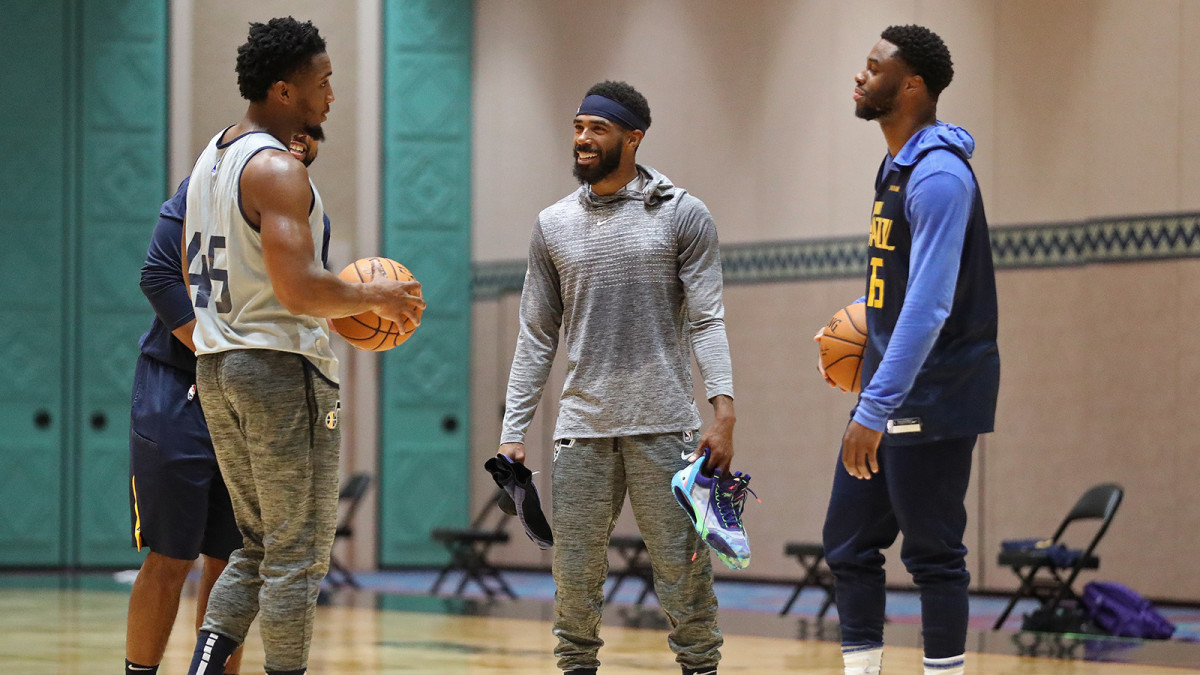
Mike Conley had just figured it out.
It’s been a turbulent first season for Conley in Utah. Early on, he struggled with his shot. He struggled with his role. After 12 seasons in Memphis, he struggled with his new environment.
Routine was part of it. Conley is a creature of habit. In Memphis, Conley knew the exact time—40 minutes—it took him to get from his house to the arena. He created a game-day playlist accordingly. In Utah, the 10-minute ride messed with his head. He tried different routines. None stuck.
In Orlando, Conley has searched for a new routine. It’s challenging. Teams have no control over practice times. The NBA assigns them, starting as early as 9 a.m. or a three-hour window that begins at 7 p.m. Conley has tried to settle into a schedule. After practice, time permitting, it’s an outdoor meal with a few teammates. Then it’s a FaceTime call with his family. After that? “Netflix and video games,” says Conley. A couple of episodes of Ozark and then an hour or so of Call of Duty.
“You can lose track of time,” says Thunder coach Billy Donovan. “Can you really stay engaged? Understanding that this is a different routine. It takes a lot of focus and concentration on getting yourself ready to play. … Everyone is dealing with it, but the group that can handle it the best will be the one that sees their way out of this.”
Indeed, how teams handle the lifestyle of the bubble will play into on-court success. “This is not Syria,” Thunder center Steven Adams says. “We’re living in a bloody resort.” He’s right. But isolation can be difficult. Players practice for three-hours a day, watch film … and then they are on their own. Jayson Tatum bought matching books so he can read to his young son, Deuce. Joe Ingles scours real estate listings in Australia. JJ Redick podcasts. Matisse Thybulle has created his own YouTube series. Jerome Robinson has become an avid fisherman. The Rockets have a cornhole tournament. Many players have taken up golf.
Coaching staffs have encouraged players to be as active as possible.
“Every day I tell the guys, ‘Book some golf, go for a walk,’” says Heat coach Erik Spoelstra. “Some of the guys just roll their eyes. They would prefer to just stay in their rooms and play video games. I think it’s good to get some Vitamin D and get out there.”
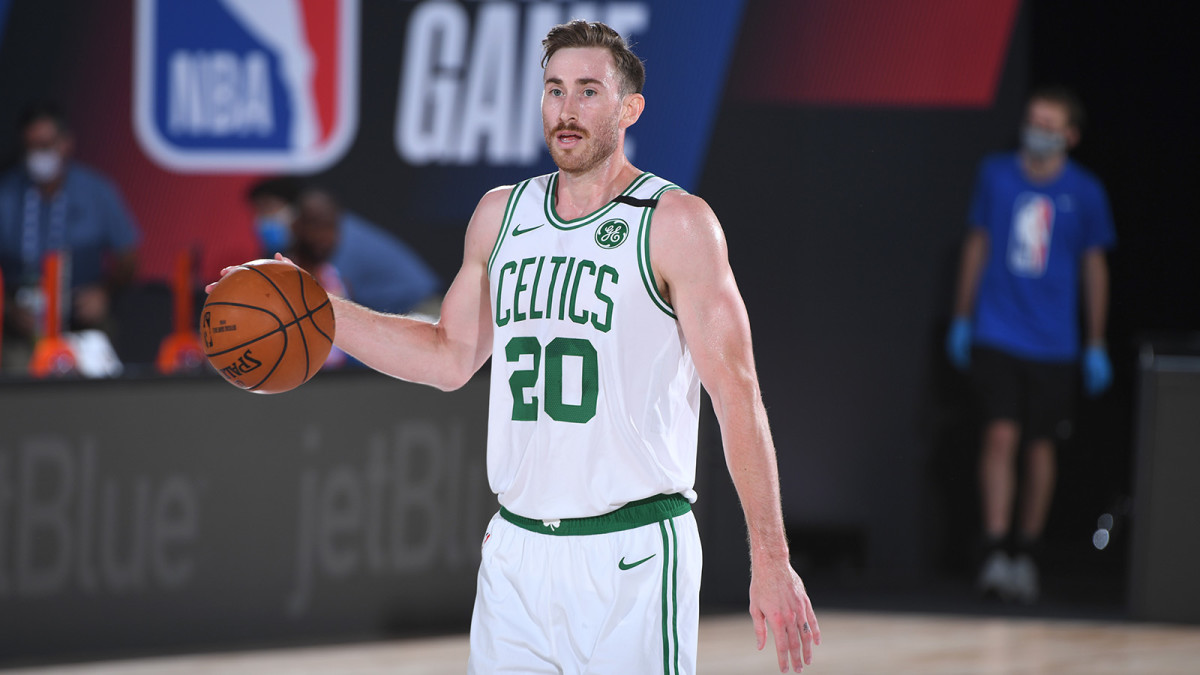
Gordon Hayward admits it felt a little weird. Last week, Hayward stepped out of Boston’s makeshift locker room at the Visa Center, one of three facilities the NBA will play games in. The floor was the same; an NBA logo has replaced team logos, and Black Lives Matter is imprinted across the center of each floor. The backdrop is decidedly different. 17-foot LED screens wrap around three sides of the floor. The screens will feature, among other things, virtual fans, who will log in via each team’s app to simulate the viewing experience.
For shooters, who are used to certain depths and sight lines at arenas, it will be an adjustment.
“It seems like it’s a little darker around the edges, but then you have some of the LED screens that are right by the court,” Hayward says. “It’s definitely nothing like I’ve ever been a part of.”
Projecting the 2020 playoffs nearly impossible. Will it be chalk? The Bucks looked strong in three scrimmages, and the Lakers still have two top-five talents in James and Anthony Davis. Will there be a surprise? In 1999, the Knicks stormed to the Finals in a lockout-shortened season. The healthy Blazers, if they can sneak into the playoffs, could do the same. Can Philadelphia find redemption? Will the small-ball Rockets make a run?
Inside the bubble, anything feels possible.
Let the games begin.
